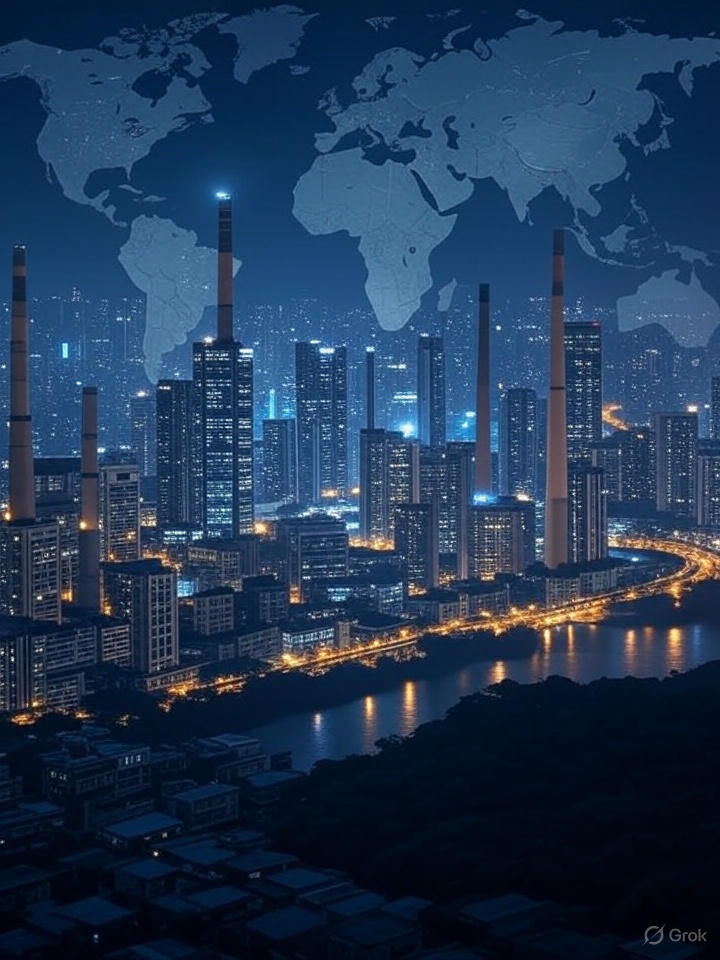A Tale of Ports and Promises
- thebrink2028
- Jul 14
- 4 min read

In the azure waters off Sri Lanka’s southern coast, the Hambantota Port stands as a gleaming symbol of ambition, and a cautionary tale. In 2017, Sri Lanka, unable to repay a $1.4 billion Chinese loan, handed over the port to Beijing on a 99-year lease. Once a sleepy fishing hub, it now bristles with potential as a Chinese-controlled strategic asset, just miles from India’s southern flank. This wasn’t an isolated incident but part of a broader strategy: China’s debt diplomacy, a calculated move to extend influence through billion-dollar loans across South Asia, boxing in regional powers like India while reshaping geopolitical dynamics.
China’s Debt Diplomacy Ecosystem
The Mechanics of Debt Diplomacy China’s Belt and Road Initiative (BRI) has funneled over $1 trillion into infrastructure projects globally since 2013, with South Asia as a key theater. Loans often come with high interest rates (2-6% compared to World Bank’s 0.5-2%) and short repayment periods, making them difficult for developing nations to service. Projects like ports, highways, and power plants are frequently economically unviable, leading to debt distress and asset transfers. For example, Sri Lanka’s Hambantota Port generated insufficient revenue to cover loan repayments, forcing the 99-year lease to China Merchants Port Holdings.
Strategic Encirclement of India China’s investments in Pakistan ($65 billion via the China-Pakistan Economic Corridor, or CPEC), Bangladesh, Nepal, and the Maldives create a “string of pearls” around India. Over 70% of Pakistan’s bilateral debt is owed to China, with Chinese drones, jets, and missiles bolstering its arsenal during the May 2025 India-Pakistan conflict. Bangladesh, post-2024 political upheaval, is leaning toward China, with 75% of its citizens viewing Beijing favorably compared to 11% for India. Nepal’s infrastructure and Maldives’ $1.3 billion debt further tighten the noose, reducing India’s regional sway.
Economic and Political Fallout
Debt creates dependency. Sri Lanka’s 2022 economic crisis, exacerbated by Chinese loans, required a $3 billion Indian bailout. Bangladesh’s economic woes and Pakistan’s vassal-like status illustrate how debt translates into political leverage. China’s control over key infrastructure—like Pakistan’s Gwadar Port or Bangladesh’s Payra Port—grants it military and economic choke points, undermining India’s leadership in South Asia.
India’s Countermeasures
Prime Minister Narendra Modi’s July 2025 tour to Ghana, Trinidad and Tobago, Argentina, Brazil, and Namibia aimed to offer an alternative to China’s debt-heavy model, emphasizing sustainable development and trade partnerships. India’s $3 billion aid to Sri Lanka and tightened scrutiny of Chinese FDI (e.g., electronics component makers shifting to South Korea and Taiwan) signal a pushback. India’s trade deficit with China, hitting $99.2 billion in 2024/25, underscores the urgency of diversifying supply chains.
Global Implications
China’s strategy isn’t limited to South Asia. From Africa to Southeast Asia, similar patterns emerge: Zambia’s debt default led to Chinese control of its copper mines, while Laos ceded power grid assets. The global south faces a $40 billion climate-financing gap, which China exploits with high-cost loans, contrasting with Western aid models. This raises questions about sovereignty, economic stability, and the future of global trade networks.
The Numbers
Pakistan’s Debt: Over 70% of its bilateral debt ($30 billion+) is owed to China, primarily through CPEC. This includes $10 billion in energy projects with returns insufficient to cover interest.
Bangladesh’s Shift: A June 2025 Chatham House survey showed 75% favorability toward China, driven by loans for projects like the $1.2 billion Padma Bridge. Trade with Pakistan resumed in February 2025, signaling a geopolitical realignment.
Maldives’ Burden: $1.3 billion in Chinese debt (30% of GDP) has tilted its foreign policy toward Beijing, with Chinese naval presence growing in the Indian Ocean.
India’s Trade Deficit: Imports from China reached $113.5 billion in 2024/25, with exports at $14.3 billion, a 25% year-on-year import surge in March 2025.
Global Context: China’s BRI loans have led to debt distress in 42 countries, with $170 billion in “hidden debt” (non-transparent loans) reported by AidData in 2023.
Global Perspective: A Game of Trust and Traps
China’s strategy leverages economic desperation but risks backlash. Sri Lanka’s 2022 protests and Bangladesh’s 2024 unrest show public discontent with debt-fueled projects. Meanwhile, India’s pivot to the Global South and the U.S.’s tariff threats against China (July 2025) signal a broader push to counter Beijing’s influence. The EU’s Global Gateway initiative ($300 billion by 2027) and Japan’s infrastructure partnerships offer alternatives, but their scale lags behind China’s. The challenge is balancing development needs with sovereignty, a dilemma faced from Colombo to Lusaka.
If you were India’s Foreign Minister, what single policy would you prioritize to counter China’s debt diplomacy in South Asia?
A: Increase military presence in the Indian Ocean.
B: Offer low-interest loans to neighboring countries.
C: Strengthen trade ties with the U.S. and EU.
D: Invest in regional digital infrastructure.
Share your answer in the comments. The most insightful response, judged by the editorial team, wins a free one-year subscription to our premium geopolitical analysis newsletter, including exclusive reports like the one below!
Leaked from the Future: Join to Unlock
What will South Asia’s geopolitical landscape look like in 2030? Our scenario modeling predicts three outcomes: a Chinese-dominated region, an Indian-led resurgence, or a fractured stalemate.
Join The Brink’s Premium Membership to access this exclusive report, including probability scores, key players to watch, and strategic recommendations for businesses and policymakers. Don’t miss the insights that could shape your next move in a turbulent world.
-Chetan Desai (chedesai@gmail.com)


